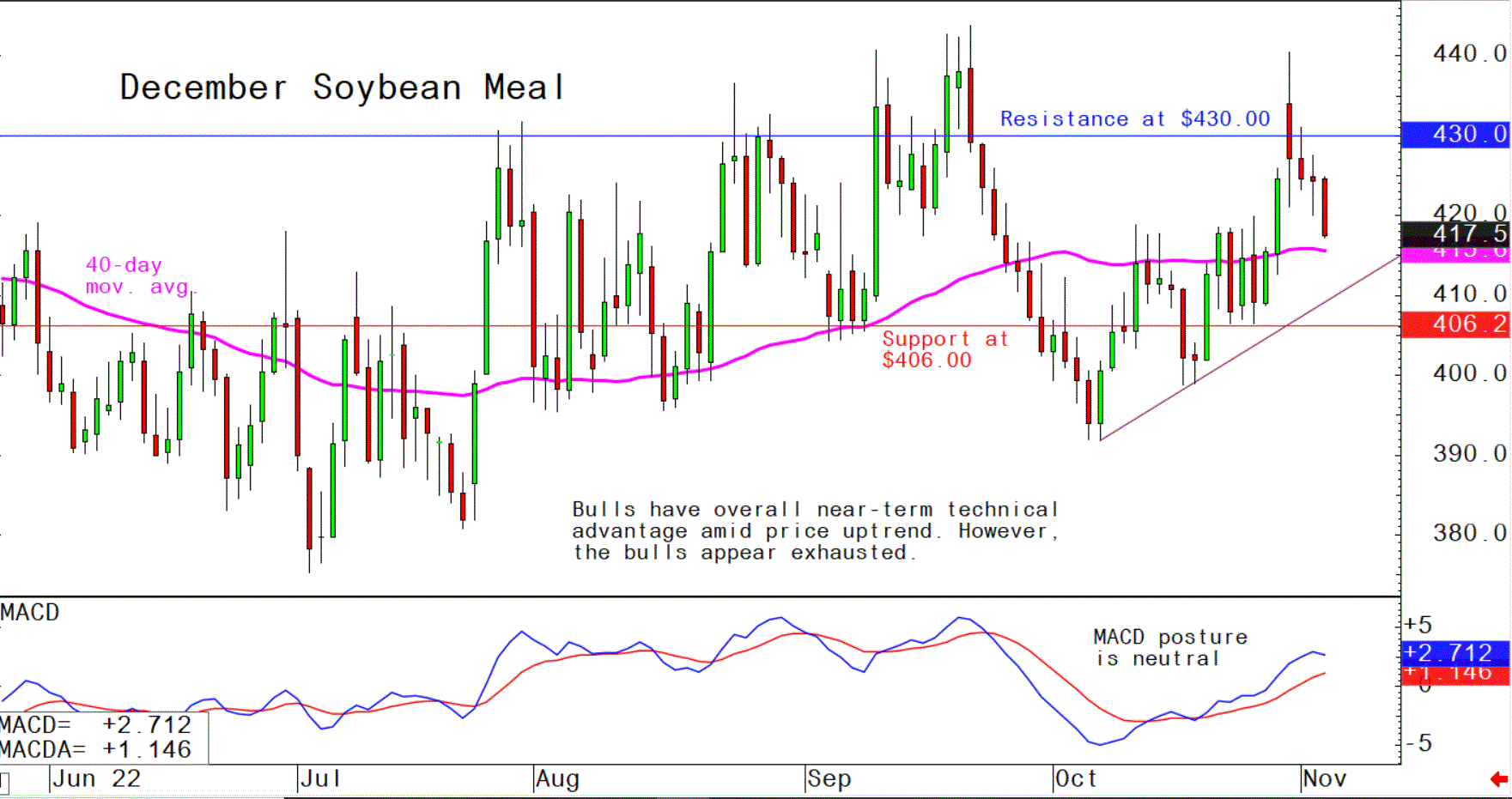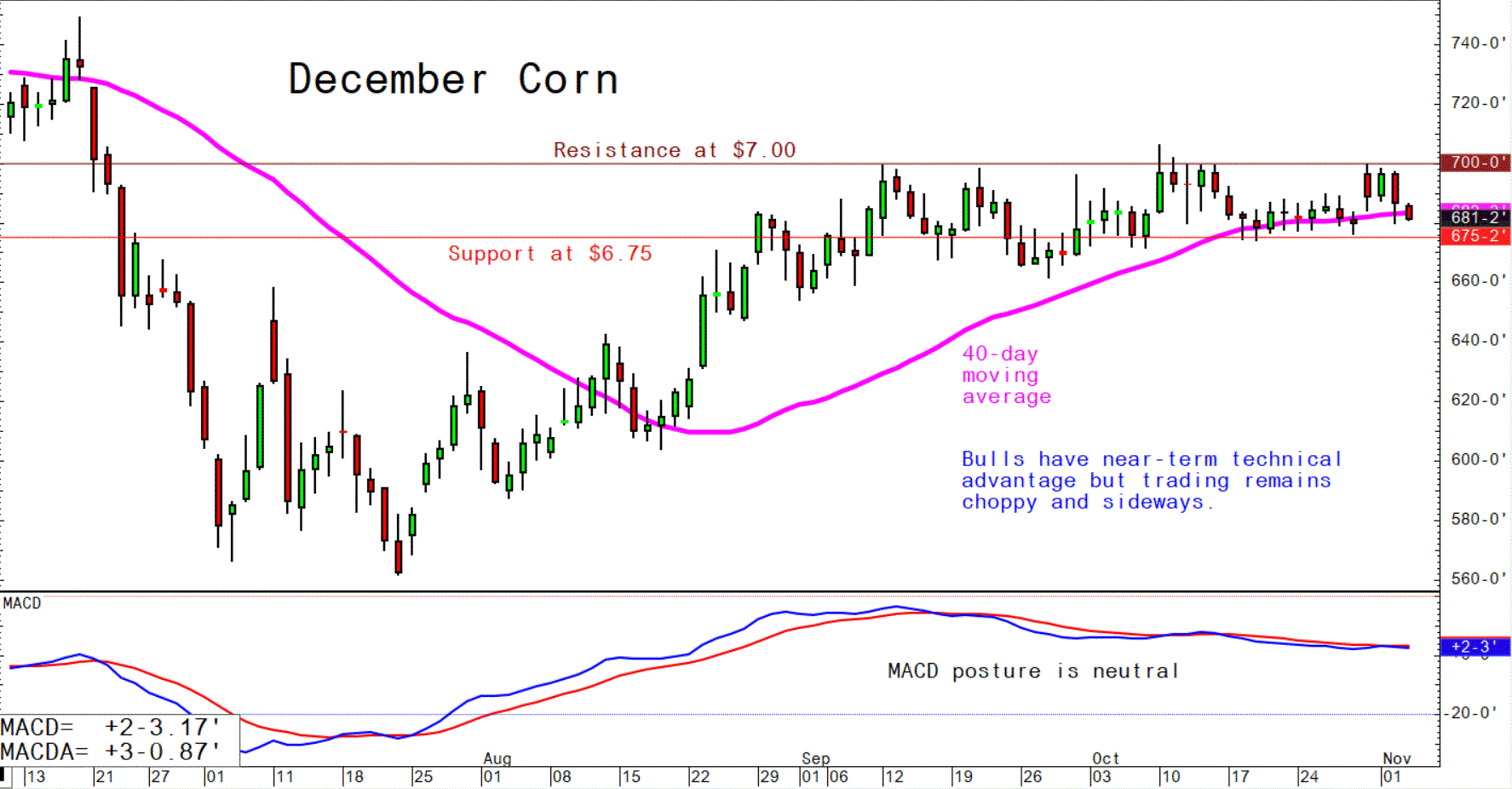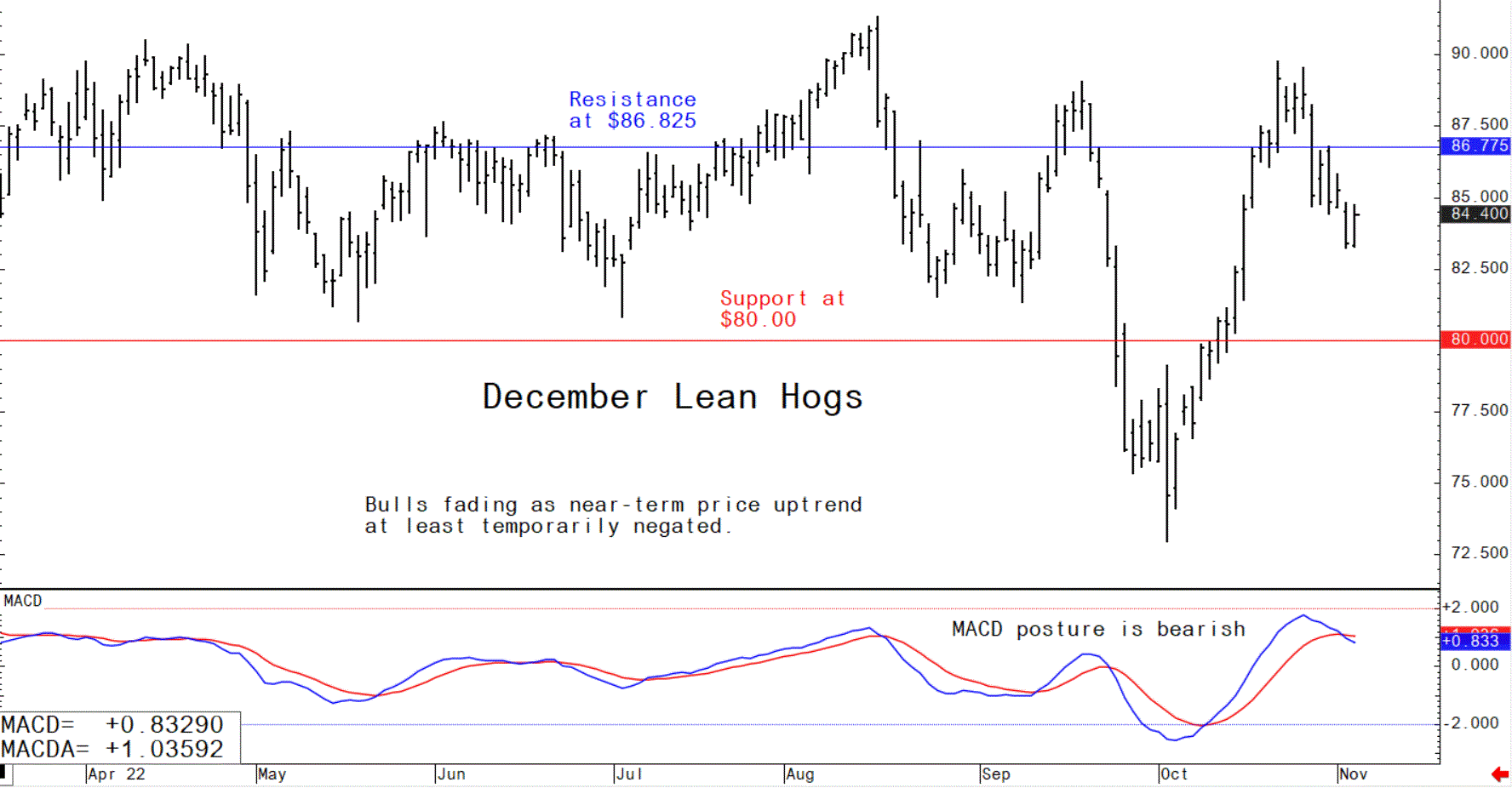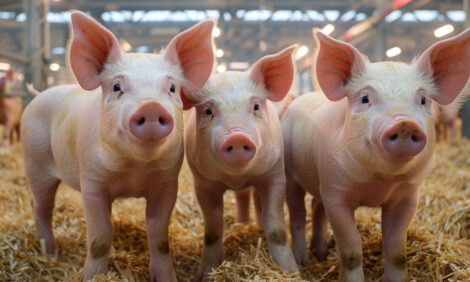



Pig outlook: Lean hog futures bulls fading this week
Analyst Jim Wyckoff shares an update on the US futures market, USDA reports and global pig newsThe lean hog December futures this week hit a two-week low and a price uptrend on the daily chart has stalled out. The bulls are fading an need to show fresh power soon. The CME lean hog index was down another 46 cents (as of Nov. 1), marking the fifth day out of the past six with price declines. December lean hog futures finished Wednesday $9.99 below today’s quote of $93.29, suggesting more weakness is coming for the cash index. Slaughter rates are increasing seasonally, weighing on wholesale pork. Cash hog weakness may be short-lived, however, because domestic hog and turkey production are below year-ago levels and frozen stockpiles of both are well below normal, suggesting support from ham and turkey markets into mid-December.
Weekly USDA export sales for US pork
Pork: US net sales of 47,900 MT for 2022 primarily for Mexico (12,700 MT, including decreases of 400 MT), China (11,200 MT, including decreases of 400 MT), Japan (9,300 MT, including decreases of 200 MT), Canada (3,900 MT, including decreases of 500 MT), and Australia (3,600 MT), were offset by reductions for the Philippines (100 MT). Net sales of 500 MT for 2023 were for China. Exports of 30,700 MT were primarily to Mexico (14,100 MT), China (4,700 MT), Japan (3,200 MT), South Korea (2,900 MT), and Canada (1,400 MT). Late Reporting: For 2022, net sales totaling 400 MT of pork were reported late for Panama (100 MT), Vietnam (100 MT), the Dominican Republic (100 MT), and South Korea (100 MT). Exports totaling 200 MT were reported late to the Dominican Republic (100 MT) and South Korea (100 MT).
USDA announces $223 million in grant, loans for US meat processing
As expected, USDA Secretary Tom Vilsack today in Omaha, Neb. will announce $223 million in taxpayer grants and loans to expand meat and poultry processing capacity and to address supply chain problems. Details:
- Projects are divided among $73 million in 21 grants through the first round of the Meat and Poultry Processing Expansion Program (MPPEP), $75 million for eight projects through the Meat and Poultry Intermediary Lending Program, and $75 million for four meat and poultry-related projects through the Food Supply Chain Guaranteed Loan program.
- Vilsack said the funding “will open new opportunities for cattle producers by expanding their beef processing capacity by 700 head per day. The project will also support an additional 275 jobs.”
- USDA received 300 applications for the programs, with 40 reviewed.
- Vilsack was asked about some community objections to meat and poultry plants, about environmental considerations, and the availability of labor. He said part of the evaluation criteria considered was community impact and support and that there had been an environmental analysis as part of the review. Applicants had to attest that they would create good paying jobs and that they believe they can find the workers for the plants. Vilsack said most of the plants would be small and therefore not have to deal with the labor shortages that big plants have had to endure.
- Asked whether big meat and poultry companies would buy up small plants, Vilsack and Karama Neal, the administrator for the Rural Business-Cooperative Service, a division of the Rural Development mission area, who oversees the program, said that if the plants are to be sold, USDA must be notified, and that USDA would attempt to provide additional financing if that were needed. Vilsack said USDA has no plans to buy any of the plants.
- More to come: Tuesday’s announcement was the first round of funding made available through Phase I of MPEPP, USDA said. Additional announcements are coming. USDA will also begin taking applications for a new phase to deploy an additional $225 million, for a total of up to $375 million, to provide gap financing for independent processing plant projects that fill a demonstrated need for more diversified processing capacity.
- Objective of the Meat and Poultry Intermediary Lending Program (MPILP) is to provide grant funding to nonprofit intermediary lenders who finance — or plan to finance — the start-up, expansion, or operation of slaughter, or other processing of meat and poultry. In the first round of MPILP, $75 million was awarded to eight lenders in seven states. Applications for the second cycle ($125 million) are being accepted and are due Dec. 31.
- Via the Food Supply Chain Guaranteed Loan program (FSCGLP), USDA partners with lenders to guarantee loans to help eligible entities expand meat and poultry processing capacity and strengthen the U.S. food supply chain. Lenders provide the loans to eligible cooperatives, corporations, for profits, nonprofits, Tribal communities, public bodies and people in rural and urban areas. Since FSCGLP was launched in December 2021, more than $250 million in loans have been guaranteed for projects in the middle of the food supply chain, USDA said. Four of these, announced Tuesday and totaling more than $75 million, are for meat and poultry processing businesses.
China to release more pork reserves
China’s state planner said on Tuesday it will release its seventh batch of frozen pork from reserves, without providing details. China sold 200,000 MT of pork from state reserves last month to help ease surging domestic pork prices.
China’s hog herd expands in September
China’s sow herd grew 2% in September versus the prior month to 43.62 million head, according to the country’s ag ministry. The hog herd increased 3.1% from the prior month to 443.94 million head and was up 1.4% from year-ago.
China: swine and pork market interventions ineffective at managing rising prices
Since September 8, 2022, the People’s Republic of China (PRC) National Development Reform Commission (NDRC) has auctioned 127,100 metric tons (MT) of frozen pork reserves as an attempt to curb rising prices. However, despite numerous auctions and other PRC market guidance, domestic prices continue to rise. China is now entering the peak season for demand of pork and pork products. Imports of pork from January through August 2022 are down 62 percent compared to the same period in 2021.
The next week’s likely high-low price trading ranges:
December lean hog futures--$81.00 to $86.00 and with a sideways bias
December soybean meal futures--$410.00 to $430.00, and with a sideways bias
December corn futures--$6.70 to $7.00 and a sideways bias
Latest analytical daily charts lean hog, soybean meal and corn futures












